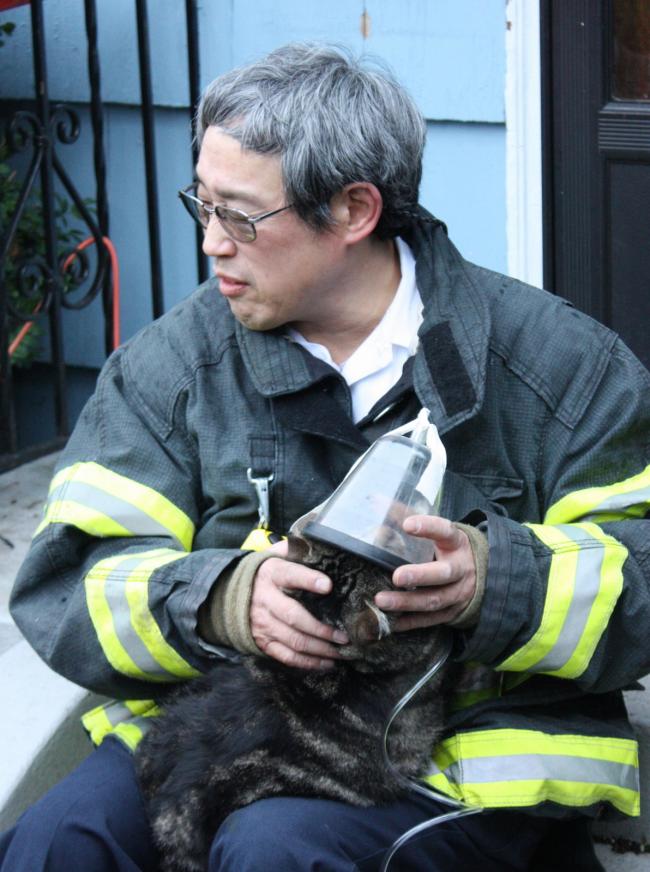SFD: How to deal with pets when a fire breaks out
A firefighter uses a specially-equipped oxygen mask to get oxygen to a cat rescued from a West Seattle fire in 2012.
Thu, 05/16/2013
The following information is from the Seattle Fire Department:
Fire and your Pet
For many of us, our pets are members of our family and the loss of a pet in a fire can be devastating. It is important to remember that you may have less than a minute or two after the smoke alarm sounds to get out of the house. Because many pets will hide out of fear, taking time to search the house for them can mean the difference between life or death. Leaving pet rescue to firefighters can help keep your family safe from fire’s harm.
A Firefighter’s Duty
A firefighter’s priorities are to rescue you and your family, and to minimize the damage to your home and property. However, firefighters will do their best to find and rescue any animals found in the home. The Fire Department is equipped with the pet-sized oxygen masks and tanks needed to help resuscitate your pet, if necessary. If you are unable to take your pet out with you, the best thing you can do is to let the first firefighter on the scene know that there is a family pet inside. Keep a picture of your pet with you, show the firefighter and tell him or her your pet’s name.
What Can You Do?
When you test your smoke alarm once a month, see how your pet reacts to the sound of the smoke alarm. Do they stay close to you or do they run and hide? This will tell you how they might respond in an actual emergency when the smoke alarm is activated.
If your pet is within reach and you can secure them quickly and without putting yourself at risk, try to cage or put a leash on your pet and evacuate together. If your pet is resisting or trying to hide, here are a few things you can do to make rescuing your pet easier:
Large animals
If possible, put your pet in a room and shut the door to keep more smoke from entering the room and help prevent smoke inhalation. Get out of the house and tell the first firefighter on the scene where your animal is located. Some large animals that are very scared might attack the firefighter or make it harder for them to be rescued – if you can crate these animals in a less smoky environment, do so.
Small animals
Many pets will run and hide under beds or in closets. If you know where they’ve gone, shut the door to that room and tell the first firefighter on the scene where your animal is located. If your pet carrier is accessible, and you can grab your pet easily, place him or her inside and get out of the house. If your car keys are accessible and your car is parked out of harm’s way, your car can be used to secure pets until you can inform the first firefighter on scene.
Practicing home fire drills – not only with your family but with your pet – can also ensure quickly getting to safety. Practice this from every part of your home, and know two ways out from each room.
Medical Emergencies
If 911 has been called because of a medical emergency, secure your pet in a crate or closed off room. This will help prevent your pet from getting too stressed, getting lost, or attacking emergency crew. If you can, call someone to come take care of your pet.
For More Information
Contact:
Seattle Fire Department
fireinfo@seattle.gov
www.seattle.gov/fire


